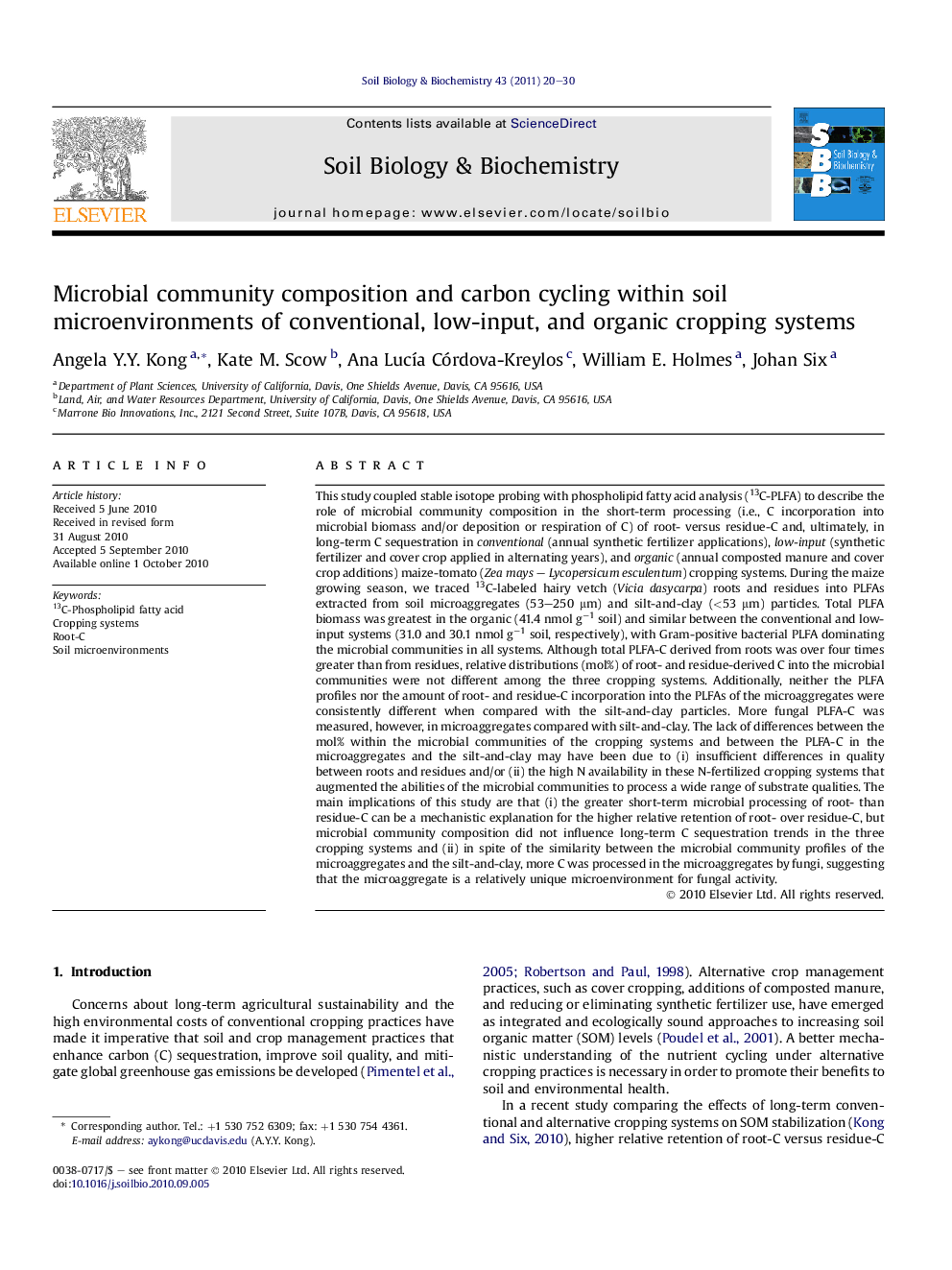| کد مقاله | کد نشریه | سال انتشار | مقاله انگلیسی | نسخه تمام متن |
|---|---|---|---|---|
| 2025702 | 1070007 | 2011 | 11 صفحه PDF | دانلود رایگان |

This study coupled stable isotope probing with phospholipid fatty acid analysis (13C-PLFA) to describe the role of microbial community composition in the short-term processing (i.e., C incorporation into microbial biomass and/or deposition or respiration of C) of root- versus residue-C and, ultimately, in long-term C sequestration in conventional (annual synthetic fertilizer applications), low-input (synthetic fertilizer and cover crop applied in alternating years), and organic (annual composted manure and cover crop additions) maize-tomato (Zea mays – Lycopersicum esculentum) cropping systems. During the maize growing season, we traced 13C-labeled hairy vetch (Vicia dasycarpa) roots and residues into PLFAs extracted from soil microaggregates (53–250 μm) and silt-and-clay (<53 μm) particles. Total PLFA biomass was greatest in the organic (41.4 nmol g−1 soil) and similar between the conventional and low-input systems (31.0 and 30.1 nmol g−1 soil, respectively), with Gram-positive bacterial PLFA dominating the microbial communities in all systems. Although total PLFA-C derived from roots was over four times greater than from residues, relative distributions (mol%) of root- and residue-derived C into the microbial communities were not different among the three cropping systems. Additionally, neither the PLFA profiles nor the amount of root- and residue-C incorporation into the PLFAs of the microaggregates were consistently different when compared with the silt-and-clay particles. More fungal PLFA-C was measured, however, in microaggregates compared with silt-and-clay. The lack of differences between the mol% within the microbial communities of the cropping systems and between the PLFA-C in the microaggregates and the silt-and-clay may have been due to (i) insufficient differences in quality between roots and residues and/or (ii) the high N availability in these N-fertilized cropping systems that augmented the abilities of the microbial communities to process a wide range of substrate qualities. The main implications of this study are that (i) the greater short-term microbial processing of root- than residue-C can be a mechanistic explanation for the higher relative retention of root- over residue-C, but microbial community composition did not influence long-term C sequestration trends in the three cropping systems and (ii) in spite of the similarity between the microbial community profiles of the microaggregates and the silt-and-clay, more C was processed in the microaggregates by fungi, suggesting that the microaggregate is a relatively unique microenvironment for fungal activity.
Research highlights
► Microaggregates are a relatively unique microenvironment for fungal activity.
► The soil microbial community incorporated ∼4 times more root-C than residue-C.
► Composition of C processing microbial communities was not linked to C stabilization.
Journal: Soil Biology and Biochemistry - Volume 43, Issue 1, January 2011, Pages 20–30